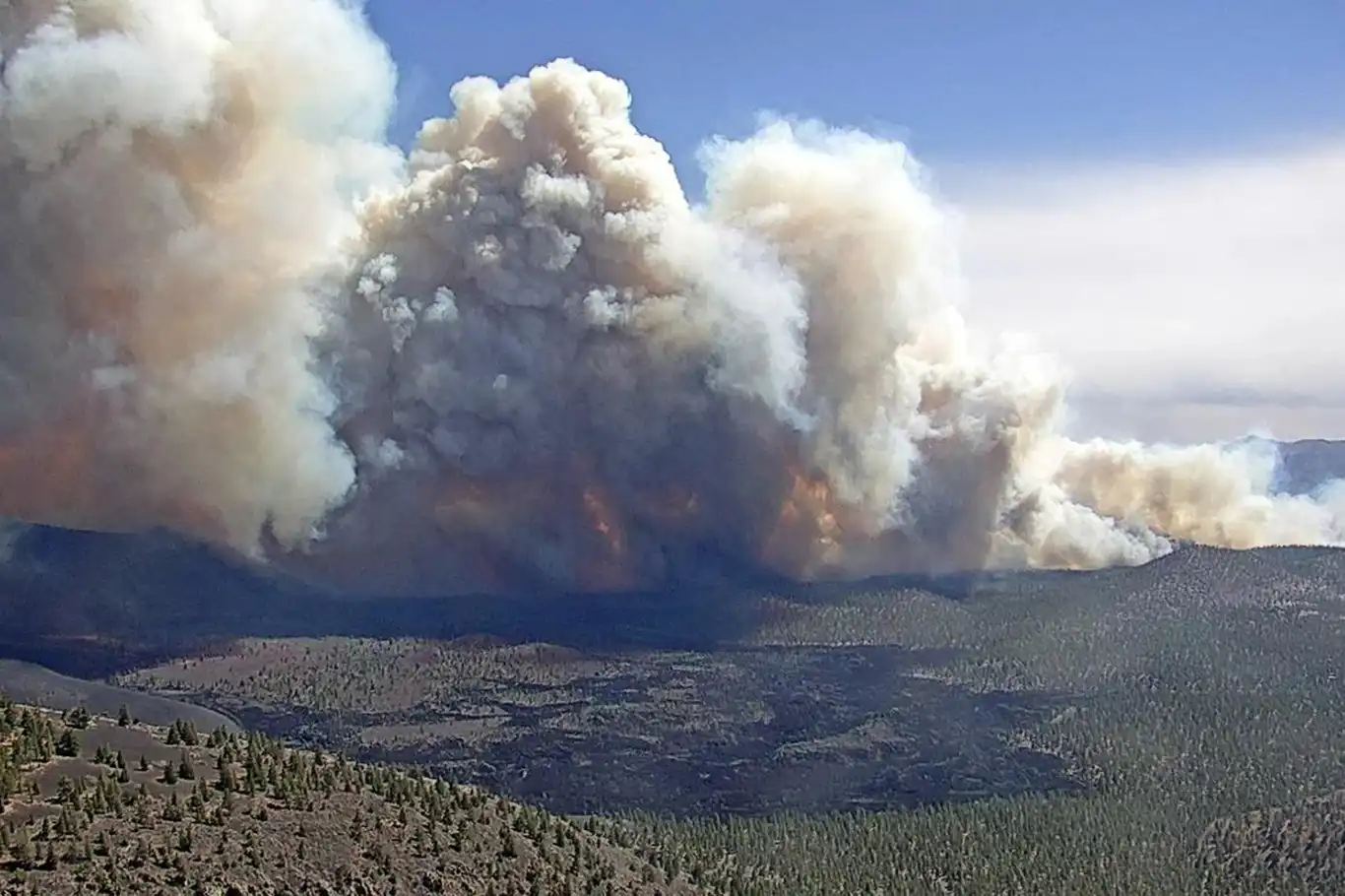Wildfire crisis grips Arizona: Grand Canyon evacuated amid 24,000-acre blaze


Two fast-moving wildfires in northern Arizona—dubbed the White Sage Fire and the Dragon Bravo Fire—have forced hundreds to evacuate and prompted the closure of key areas in and around Grand Canyon National Park, as authorities report over 24,000 acres burned and zero containment on both fronts.
The White Sage Fire, burning in the Kaibab National Forest, has rapidly expanded to more than 19,150 acres, fueled by intense heat, low humidity, and gusting winds. First reported on July 9, the blaze has grown nearly twentyfold in just 24 hours, prompting widespread evacuation orders and the closure of Highway 89A between Fredonia and Bitter Springs.
The Dragon Bravo Fire, ignited by lightning on July 4, has consumed approximately 5,000 acres within Grand Canyon National Park and has now jumped containment lines. Officials have evacuated all remaining park employees and residents from the North Rim, and major hiking trails such as the North Kaibab Trail, South Kaibab Trail, and Phantom Ranch have been closed.
Authorities have declared “GO” evacuation status for a vast area stretching from the Utah state line to the Grand Canyon National Park border, covering House Rock Valley Road/Buffalo Ranch Road in the east and the Kaibab National Forest boundary in the west.
Over 230 firefighters, backed by air tankers and ground crews, are battling the White Sage Fire under severe conditions. A Complex Incident Management Team has been deployed to enhance coordination and response efforts. The Coconino County Sheriff’s Office is working with emergency agencies to manage evacuations and keep roadways clear for firefighting operations.
The National Park Service has raised concerns over a potential chlorine gas hazard in the North Rim area, compounding the urgency of the evacuation. So far, no injuries or fatalities have been reported, though the closures are severely disrupting the peak summer tourism season at one of America’s most visited national parks.
Adding to the regional crisis, smoke from Canadian wildfires has drifted southward, blanketing parts of the Upper Midwest and contributing to unhealthy air quality across wide areas of the U.S. The National Weather Service in Flagstaff has warned of extreme fire danger, hazardous heat, and smoky conditions across lower elevations of the Grand Canyon, advising residents and visitors to exercise extreme caution.
The U.S. Forest Service and Bureau of Land Management are leading suppression operations. The White Sage Fire is burning through grasses, shrubs, and pinyon-juniper woodlands, including areas near the scar of the 2020 Magnum Fire, which scorched more than 71,000 acres.
Authorities stress that public and firefighter safety remain the top priority, and residents are urged to comply with evacuation orders and remain alert to emergency updates.
As Arizona heads deeper into a volatile wildfire season, officials are preparing for continued challenges fueled by climate conditions, and warn that vigilance and cooperation from the public are essential to prevent further tragedy. (ILKHA)
LEGAL WARNING: All rights of the published news, photos and videos are reserved by İlke Haber Ajansı Basın Yayın San. Trade A.Ş. Under no circumstances can all or part of the news, photos and videos be used without a written contract or subscription.
One year ago today, a devastating Israeli airstrike claimed the life of Mohammed al-Deif, the revered General Commander of the al-Qassam Brigades, in a targeted attack in Gaza.
At least 139 Palestinians were killed and 425 others wounded in the past 24 hours amid unrelenting Israeli bombardment across the Gaza Strip, the Palestinian Health Ministry reported on Sunday.
A man has died and a woman is in serious condition following a shooting in the Austrian town of Traiskirchen, located approximately 32 kilometres south of Vienna, police have confirmed.
China’s Ministry of National Defense has defended the actions of its military aircraft during a recent aerial encounter with Japanese fighter jets over the East China Sea, rejecting Tokyo’s complaints that the maneuver was dangerously close.